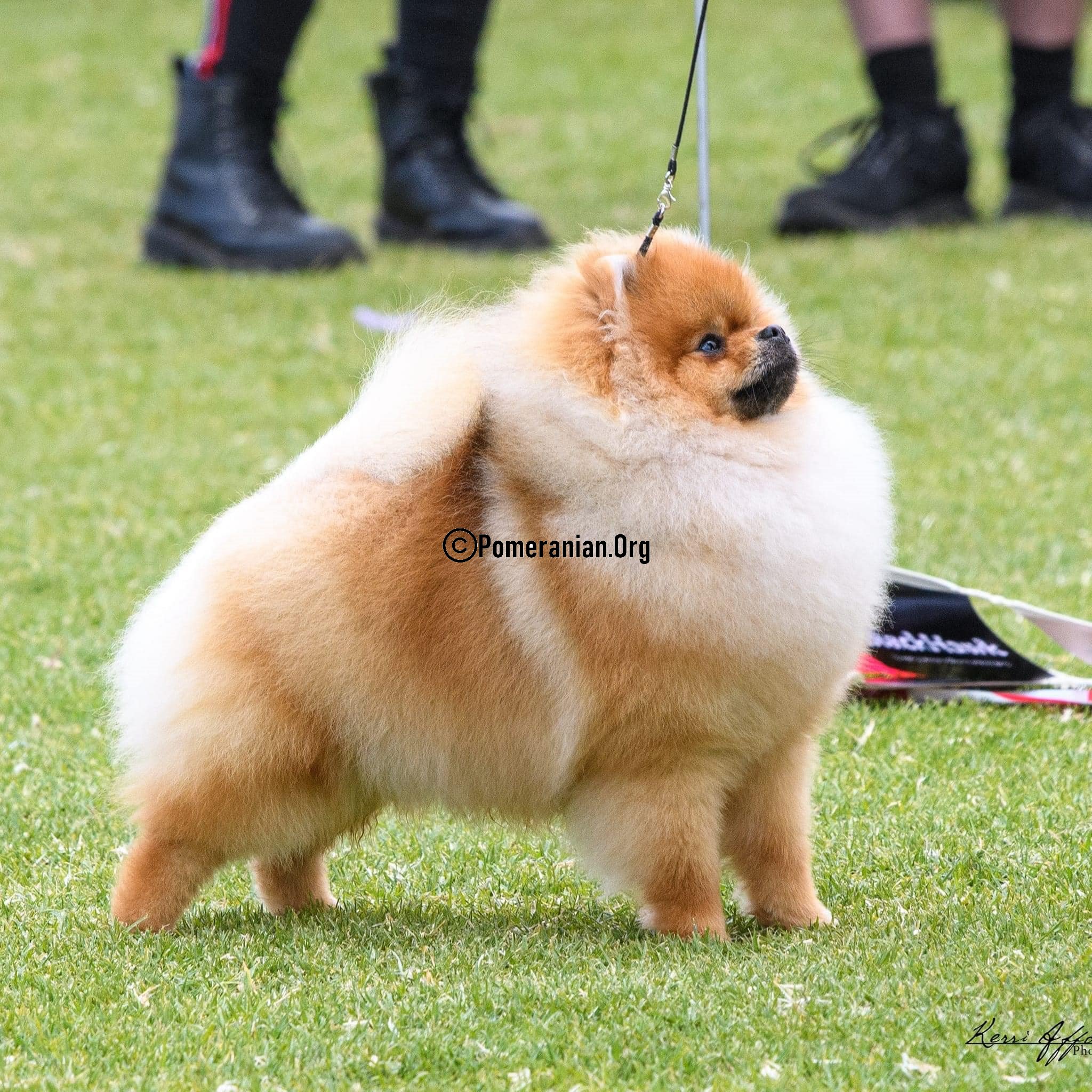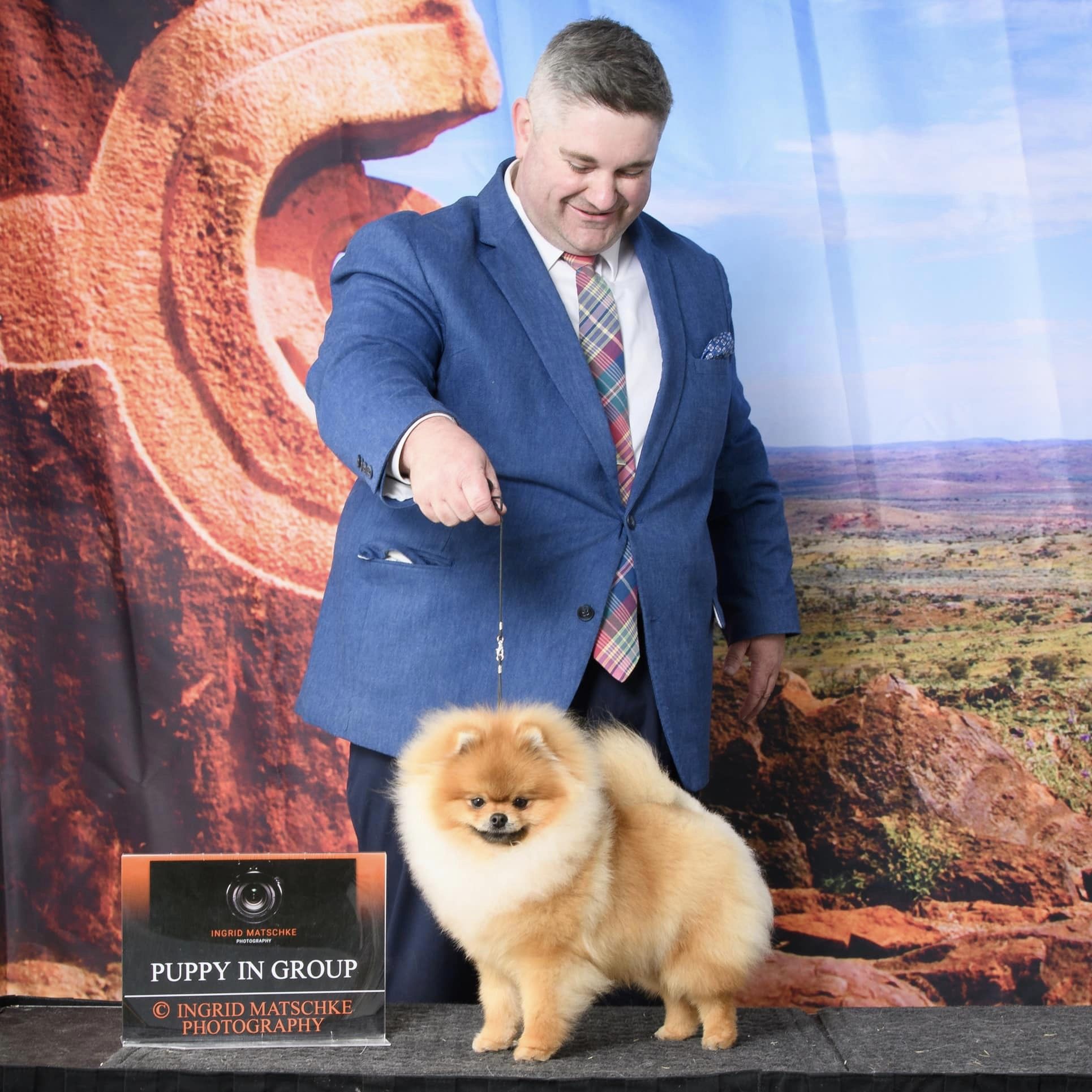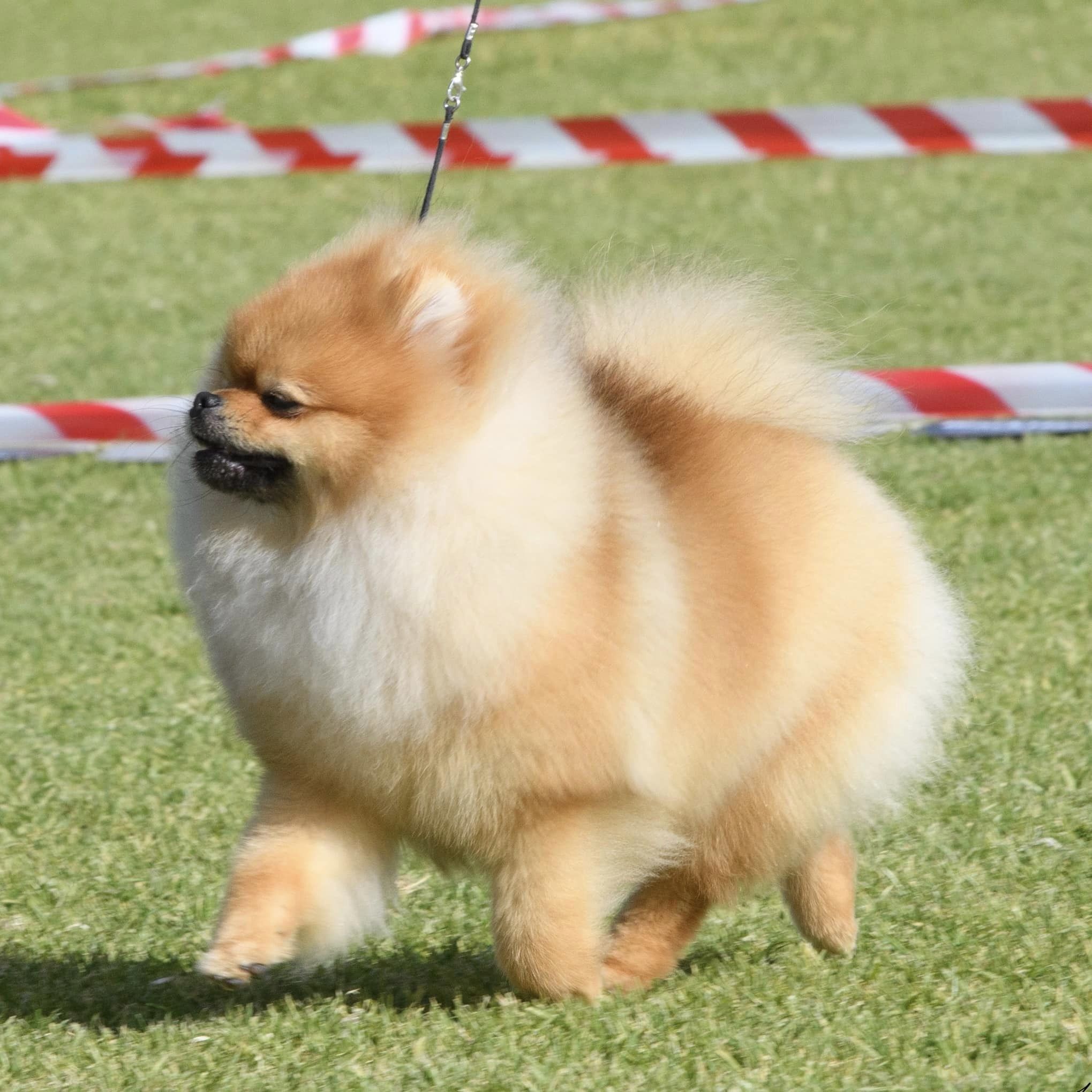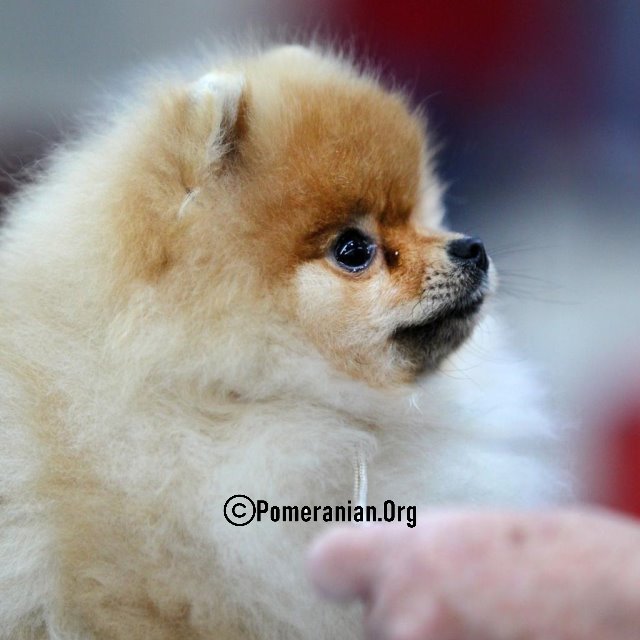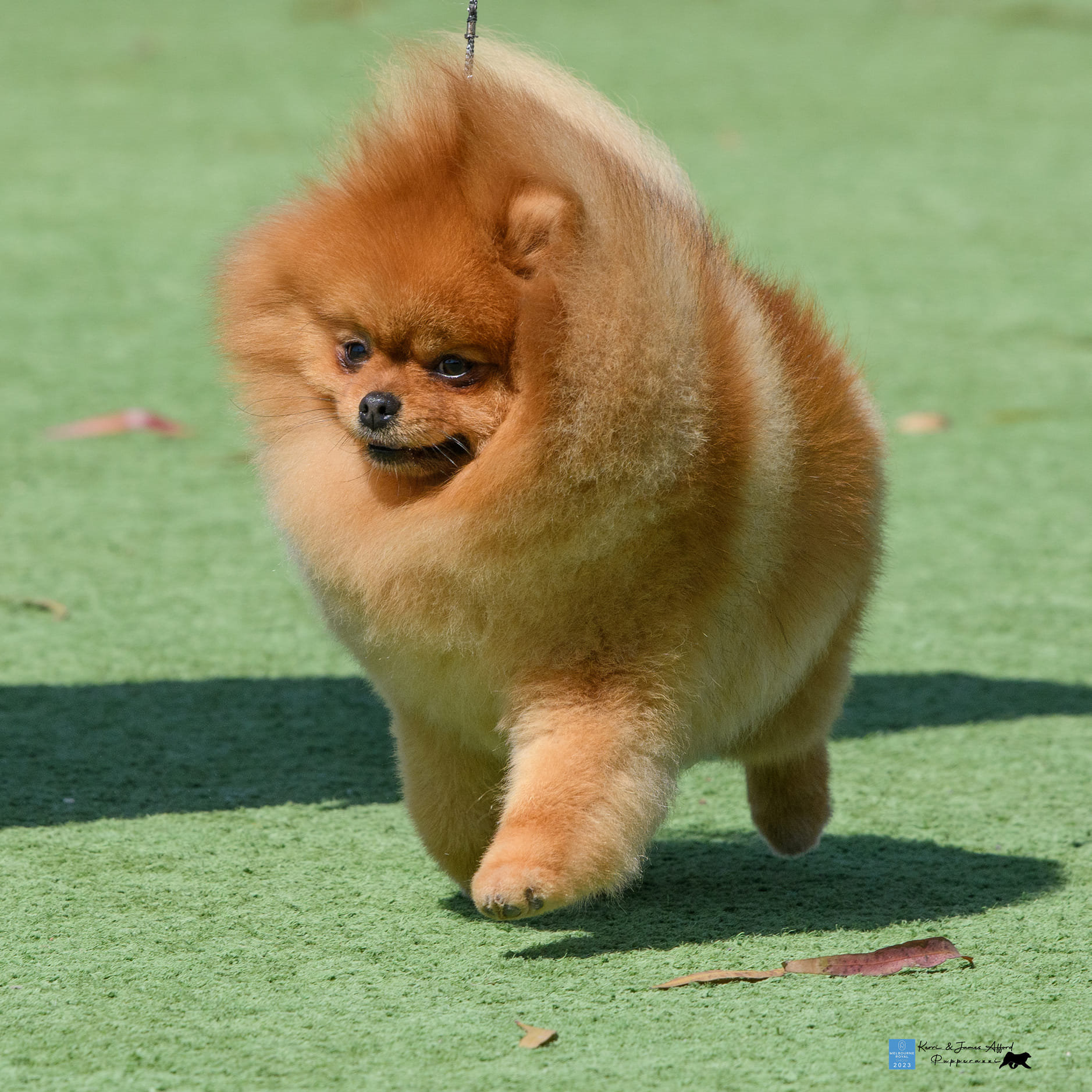Last Updated on 25/04/2024 by Dochlaggie. Post first published on August 16, 2023.
If you’re interested in learning about Black Pomeranian dogs, this article is for you. We’ve provided a complete overview of this breed’s color, history, and temperament and what owners need to know when raising one.
The Black Pomeranian is a toy breed of dog. They are intelligent, alert, and eager to please their owners. Black Pomeranians are not rare, but they can be hard to find.
Black Pomeranians Quick Facts
- The Black Pomeranian is a toy dog that is intelligent, alert, and eager to please its owners.
- They come from Spitz-type dogs from Europe and have lots of energy and an active lifestyle, and black Pomeranians are not rare.
- They can be challenging to train due to their stubborn nature.
- The coat should appear “coal-black” without red, white, or brownish fur and have black points such as eye rims, pads, lips, and nose.
- A double coat with long guard hairs and a soft undercoat must also be on an adult Pom dog.
- Exposure to sunlight can cause reddish tinges on the fur, so keeping them out of direct sunlight is recommended.
Looking for a black Pomeranian puppy? Here’s everything you need to know about the popular dog breed, including caring for black Pomeranians, their history, breed-specific grooming requirements, and how much they cost. The article also explores the genetics of this particular color variation and some tips on breeding them.
The black Pomeranian dog is an adorable, unique breed. Pomeranians are a great dog breed for people looking for an active, small dog. They have lots of energy and enjoy plenty of exercise. The Pomeranian can be difficult to train due to their stubborn nature, but they make excellent companions otherwise.
Read on for more Pom dog information to help you decide if this is your pup.
Interested in a Pomeranian black dog? If so, the next thing you should know is that some important genetic factors should be considered. All Poms come from the Spitz-type dogs, which originated from Europe.
Are you considering adding a Black Pomeranian to your family? As a breed, Pomeranians are among the most diverse, with brown, orange, and white colors.
However, black is the color many people look for when viewing colors for a new Pom family member. Black Pom dogs are not seen as a different Pom breed but as a variation of available colors.
Apart from the prominent coat, puppy characteristics will be the same, regardless of the color of their fur. As a toy dog, Pomeranians are a much-loved and extremely popular choice because they’re loyal, highly intelligent, and possess huge personalities, making them a fine four-legged new family member.
Important Black Pomeranian Facts
- Black is a solid color.
- Are black Pomeranians rare? The answer is NO!
- Black Pomeranians should be kept out of the sunlight to avoid reddish shading on coat tips.
- The black Pomeranian is one of the original Pomeranian breed colors.
- Newborn black Poms are black.
- A black Pomeranian won Best in Show at the American Pomeranian Club’s very first show.
Black Pomeranian Appearance
The Black Pomeranian should appear to be a “coal-black” color. A Black Pomeranian adult dog’s coat should be free of red, white-colored, or brownish fur. The points ( eye rims, pads, lips, and nose) must also be black.
Solid black Pomeranian dogs must possess a double coat. This double coat consists of long, harsh black guard hairs with a soft, fluffy black undercoat.
Black Pomeranian guard hairs on an adult, an all-black dog should be precisely the same color throughout the dog’s coat.
Exposure to sunlight can cause some burning to the coat, which will appear as red tinges on the fur of Pom dogs who spend long periods of time outdoors.
A black Pom dog’s undercoat may possibly appear a lighter shade especially preceding shedding.
Black Pom dogs will usually have white patches in the coat, even if it is only one or two hairs on the chest area. Mismark Pomeranian puppies are usually the result of using a black and white Pomeranian ( what is called a black and white parti Pomeranian) in the breeding program.
Examples of a Pomeranian, usually referred to as a mismark, are a black pom with one white leg, white feet, or a white collar and blaze.
Black in the Pomeranian also includes the Pomeranian patterns parti-color, white with black patches, brindle Pomeranians, and the black and tan Pomeranian dog.
Black and Tan Pomeranians: As the name suggests, they are black-colored poms with rust or tan markings.
Here at Dochlaggie, I have owned, bred, and exhibited numerous black Pomeranians over a period of many decades and have found the black poms seem to have a temperament and personality all of their own.
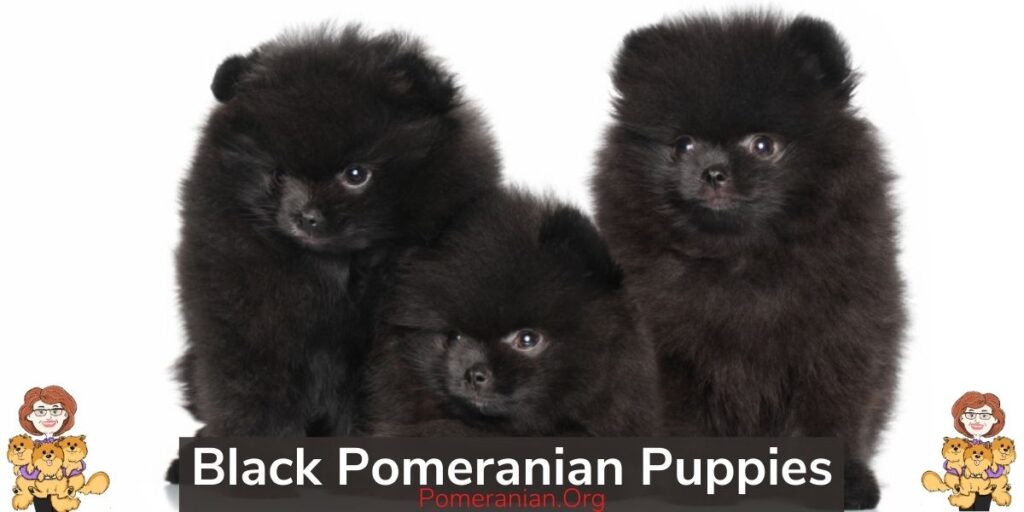
Black Pomeranian Puppies
A solid black Pom puppy has a shiny, black coat perfect for playing in the snow. They are also very small and will fit comfortably inside your home. These little dogs only grow to be about 10 inches tall, so you don’t need much space to accommodate one of these cuties in your house.
Black Pomeranian puppies have been gaining popularity recently due largely to their distinctive features and resemblance with black panther cubs, which is why they often go by nicknames like “blacky” or “pompom.”
Some Pomeranian black pups often will have greyish tones to their coat during the coat change or puppy uglies stage. This is usually nothing to be concerned about, as when the adult coat comes in, the Pomeranian pup’s coat will usually change to a solid, bright black color.
Mismarked black puppies with white feet or legs are often the result of parti genes. A black puppy with tan or white markings could be either a black and tan part or a mismarked puppy.
Are Black Pomeranians Rare?
Being black is not a rarity when it comes to Pomeranians. These dogs are usually orange in color, but this does not mean that other colors do exist.
The all-black Pomeranian color is just as popular today as it has been at any time in the history of this dog breed.
All black Pomeranians are NOT one of the rare Pomeranian colors. Although not a rare Pomeranian, a black Pom dog is not as common or popular as the orange Pomeranians and sable Pomeranians. Black Poms still have fans who would not own or even show another colored Pomeranian.
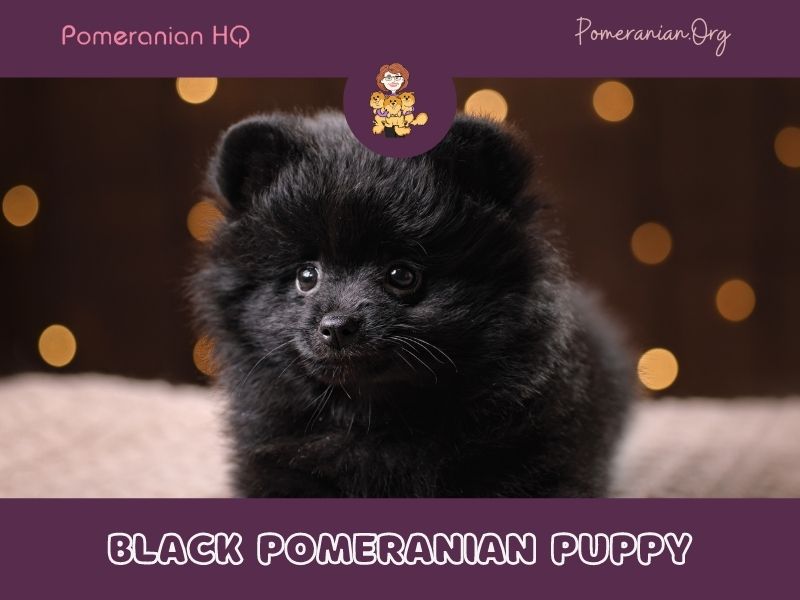
Where Can I Buy a Black Pomeranian?
If you’re looking into buying yourself a new furry friend, make sure the breeder of choice is trusted. Purchasing an animal through any random source could result in health problems as some sources have poor breeding practices, which lead to genetic disorders within these animals’ litters before they reach maturity.
Puppy buyers who wish to purchase a black teacup Pomeranian puppy are advised to contact a reputable Pomeranian breeder.
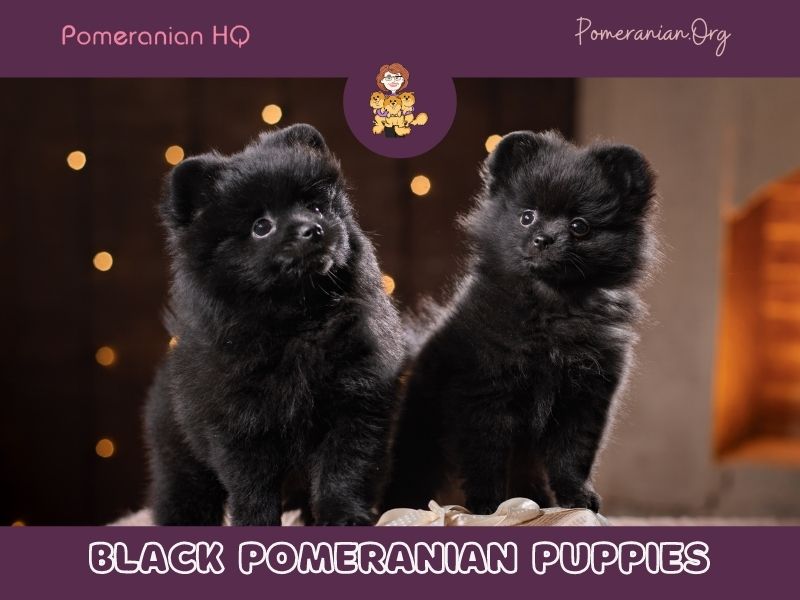
How Much is a Black Pomeranian?
It depends on the size, age, and quality. The price can range from $300- to $5000+. A breeder may charge more or less than an average purchase, but this gives you a general idea of how much it costs to buy one depending on certain factors.
As a Pomeranian breeder, my black Pomeranian puppy price is the same as the other kennel club standard Pomeranian colors. All breeders have different Pomeranian prices.
History of the Black Pomeranian
Blacks were highly sought after in the early years of this dog breed. However, the popularity of the black Pom declined when orange and sable Pomeranians appeared in the Pom dog world.
Pomeranian breeders desperately wanted to breed and exhibit the highly desirable orange and orange Sable Pomeranians.
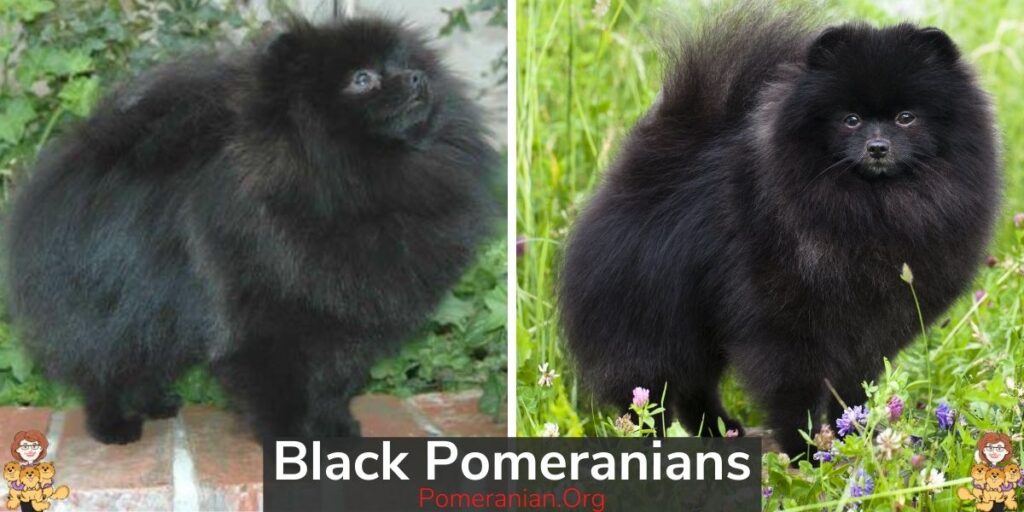
The original colors in the Pomeranian breed were white, black, and cream. In 1803, William Taplin published “The Sportsman’s Cabinet” and mentions the black Pomeranian not being seen as often as the white Pomeranian and other colors.
“POMERANIAN; or, WOLF-DOG. The dog so called in this country is but little more than eighteen or twenty inches in height, and is distinguished by his long, thick, and rather upright coat, forming a most tremendous ruff about the neck, but short and smooth on the head and ears; they are mostly of a pale yellow, or cream-color, and lightest on the lower parts.
[6] William Taplin “The Sportsman’s Cabinet”.
Some are white, some few black, and others but very rarely spotted; the head broad towards the neck, and narrowing to the muzzle; ears short, pointed, and erect; nose and eyes mostly black; the tail large and bushy invariably curled in a ring upon the back. Instances of smooth, or short- coated ones are very rarely seen; in England he is much more familiarly known by the name of fox-dog, and this may originally have proceeded from his bearing much affinity to that animal about the head; but, by those who in their writings describe him as a native of Pomerania, he passes under the appellation of the Pomeranian-dog.”
Early in the breed’s history, Kennel Club Pomeranian breeders mated numerous quality black Pom females to any other color Pomeranian dogs in an attempt to breed sable Poms.
The white Pomeranians and black Pomeranians no longer ranked top position in breeding programs and the show ring. Now there were other colors such as orange, sable, blue, and chocolate.
Black Pomeranian Grooming and Black Pom Coat Care
Grooming a black Pomeranian is a little more difficult than the standard or orange or orange sable Pomeranians. This color dog’s coat needs special care and attention to look its best in the show ring.
The black Pom is another colored Pomeranian dog that must be kept out of direct sunshine during the summer months to avoid any red tinges or sunburning of the dog’s coat.
Dog coat conditioning sprays containing sunscreen are a must-have item for a pure black Pomeranian to maintain coat condition. I recommend and use the following dog grooming products.
Recommended Coat Care Products For Black Pomeranians
Avoid exposing your black Pom to harsh sunlight will help the appearance of the black coat. Using ordinary talcum powder for grooming is to be avoided. A black chalk block is a good alternative to use on any black Pom show dog.
White or grey hairs often appear and are very noticeable at a young age on the muzzle area of dark sable and black adult Pomeranians, so these dogs will look older than they are.
Breeding and Exhibiting Black Adult Show Pomeranians
These black dogs quickly became popular with American Kennel Club breeders and exhibitors. During the past 100 years, many black toy Poms have won top awards.
A black Pomeranian, Champion Banner Prince Charming, owned by Mrs. Frank Smythe, won Best in Show at the first American Pomeranian Club Championship Show.
Early Champion Blacks

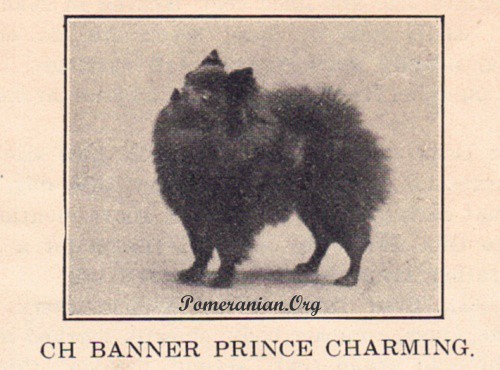
Recent Important Black Pomeranians
Many black Pomeranians have contributed to and greatly influenced the breed. A recent top-winning Pomeranian black was Best in Show Champion Finch’s He Walks on Water.
He is known at home and to his fans as Travis. The late Dianne Finch bred Travis. Travis has been described as the biggest winning black Pom in the breed’s history. Travis won 12 Best in Show awards and sired 67 Pomeranian champions.
The Pomeranian in black is an important addition to any Pomeranian breeding program. Breeding a black Pom into the oranges and red Pomeranians enhances the color clarity of the coat and improves pigmentation in only one generation.
Black is also a very helpful color to add to a white Pomeranian breeding program. The most successful Pom kennels will include at least one black to use to improve and maintain these very desirable Pomeranian qualities.
Personally, I don’t particularly appreciate showing a Pomeranian black dog. I have found many judges appear to ignore a good black in favor of the more popular orange and orange sable in the show ring.
I have also found that blacks can be more challenging to prepare for the show ring than the orange and orange sables.
Another problem is the choice of contrasting color clothing for the handler. Never wear black or dark-colored clothing when handling any black dog. Light and bright clothing is a much better choice for handlers of dark-colored dogs.
Breeding Black Poms
What you want will determine your actions when you attempt to breed black Poms. Don’t breed with Pom dog dilution genes if you want to keep the intensely dark black pigment.
The ideal choices to breed quality black Poms are other black Pomeranians, black and tan Pomeranians, dark orange sable Pomeranians, red sable Pomeranians, and intense red Pomeranians.
If you plan to breed black to black for numerous generations without including sable genes, the texture of the coat will likely be lost, but the intense black pigment will remain.
A good black dog is always useful to any white Pomeranian breeding program.
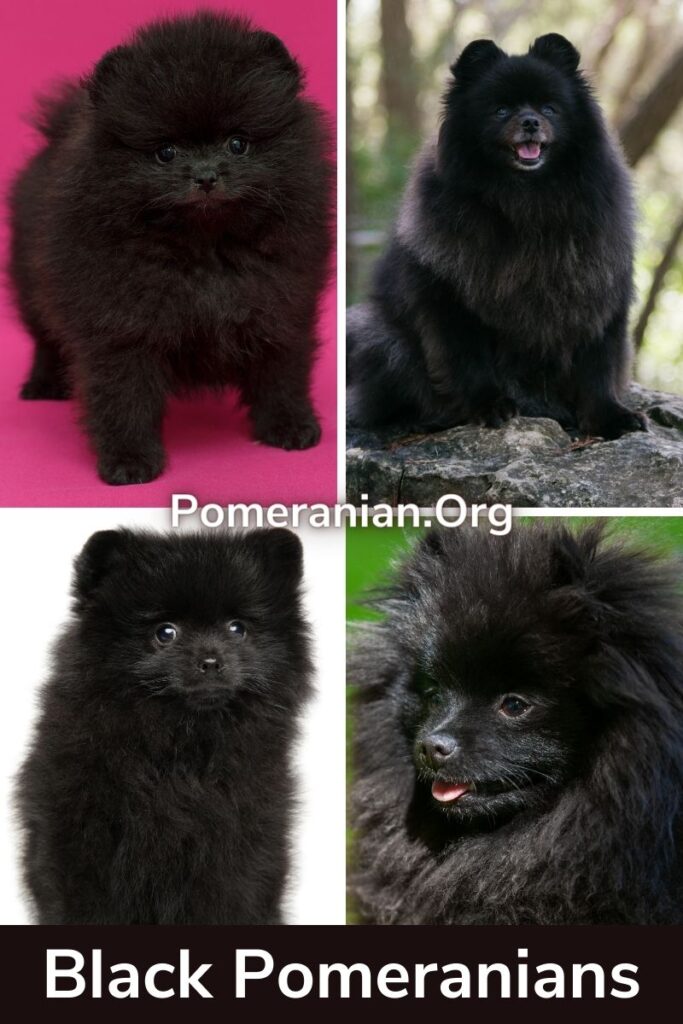
Black Pomeranian Genetics
Black is actually a self-color, meaning the dog is only a single color, and the coat has an extremely black pigment. In Pomeranians, the dominant K allele is the typical reason. However, there have been some incidents (within the Pom breed) of the recessive black (a).
Black Dilutes and Recessive Genes
When other recessive genes exist, a dog that’s solid black can become other colors, such as blue (dd), solid chocolate (bb), and if the dog has both, the result is isabella/lavender (bbdd). If two recessive genes that are clear orange (ee), are also present, the dog will become clear orange and completely mask the black gene (K).
Black and White Pomeranian Dogs
A black and white Pomeranian is an eye-catching and uniquely colored variant of this beloved breed. Usually referred to as a parti-colored Pomeranian or a black mismarked Pomeranian, this coloration adds charm to their already adorable appearance.
Parti-colored Pomeranians have a white base coat with patches of black, giving them a distinguished and playful look. On the other hand, the black mismarked Pomeranian may have less defined coloration, with a small patch in the coat. Examples of a mismarked black Pom are one white leg, white toes, white collar marking, and more.
Final Thoughts on Black Pomeranian Dogs
If you’re a Pomeranian lover looking for the perfect pet, Black Poms are just what you’ve been searching for. These little guys have stolen hearts worldwide with their gorgeous black fur and adorable eyes.
But before adopting one of your own, you must know everything about this breed to make the correct decision. It’s always a good idea to research the available breeds before you decide on one.
I hope this post helped clear up some of the misconceptions surrounding black Pomeranian dogs and I look forward to answering any other questions you might have about these adorable puppies.
Be sure to check out the rest for more information on grooming, common health issues, and other tidbits you may not know about these sweet dogs.
Pictures of Black Pomeranian Dogs and Pictures of Black Pomeranian Puppies
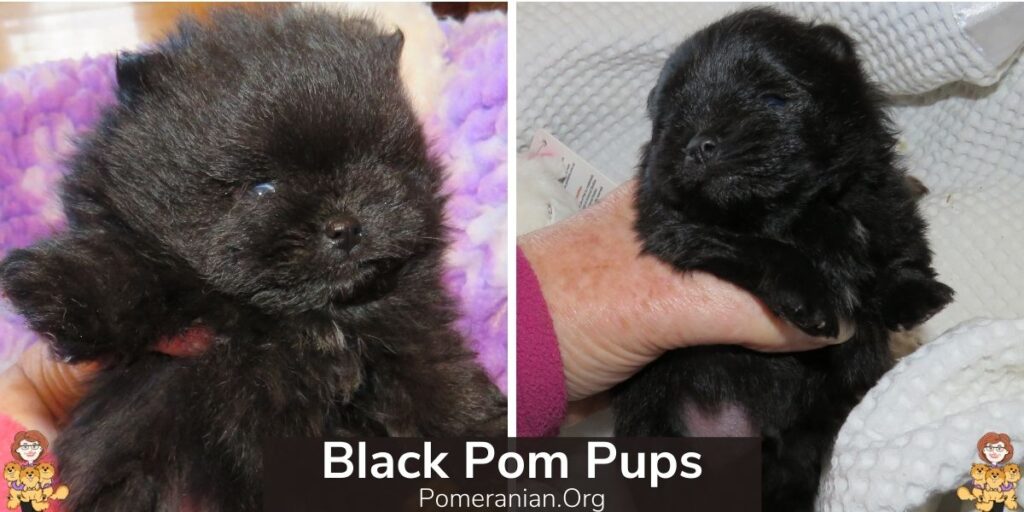
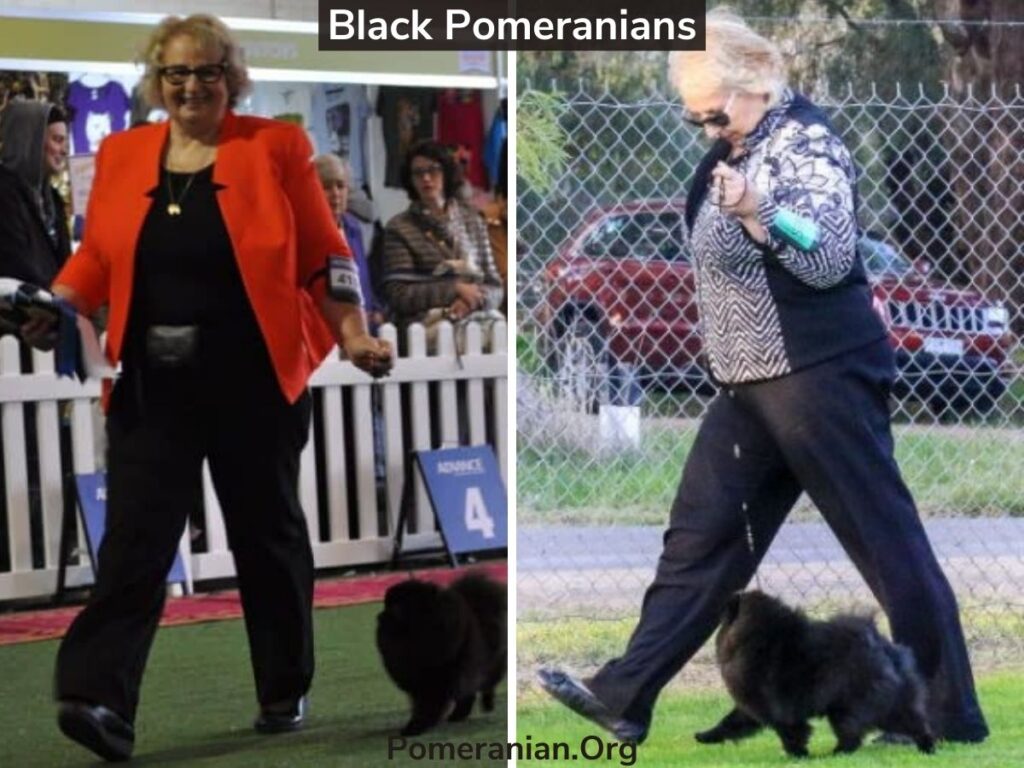
Copyright Pomeranian.Org. All Rights Reserved.
References and Further Reading:
[1] Official Standard of the Pomeranian (AKC). American Kennel Club, 2011.
[2] English Kennel Club Pomeranian Breed Standard, 2017.
[3] Denise Leo, The Pomeranian Handbook.
[4] Milo G. Denlinger “The Complete Pomeranian.”
[5] Kimbering Pomeranians “1891-1991”.
[6] William Taplin’s “The Sportsman’s Cabinet.”
[7] E. Parker “The Popular Pomeranian.”
[8] Lilla Ives “Show Pomeranians.”




